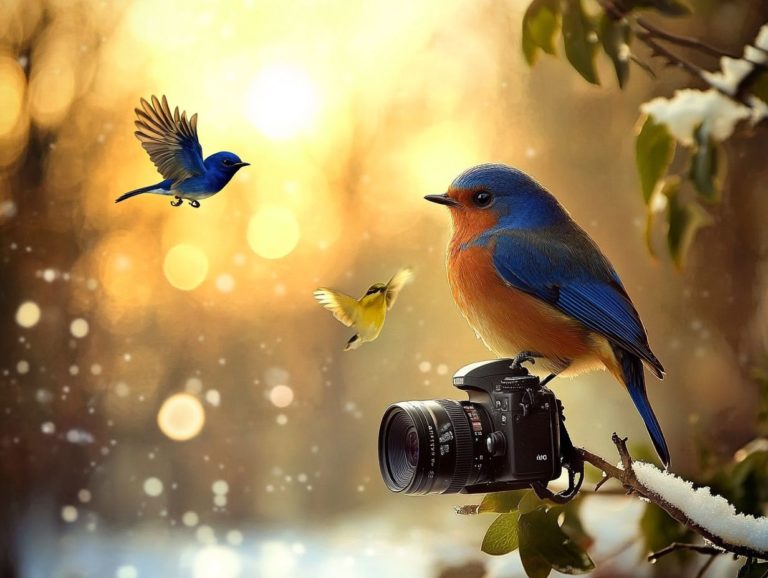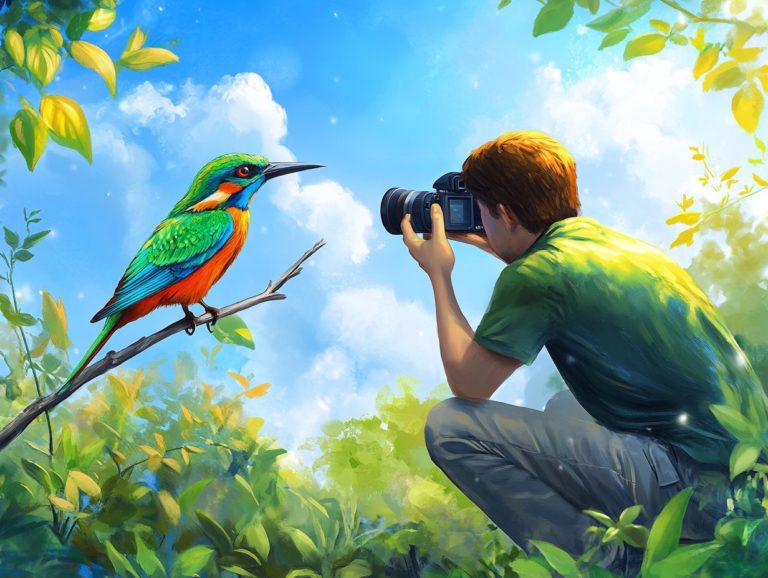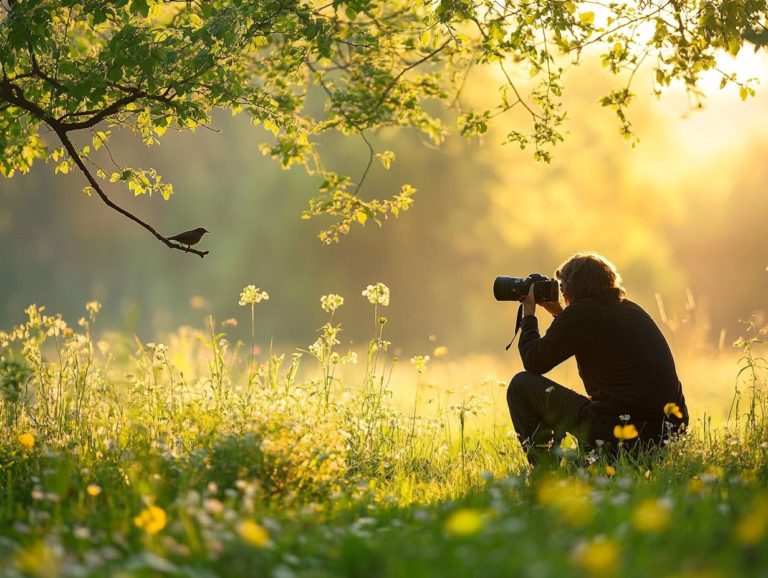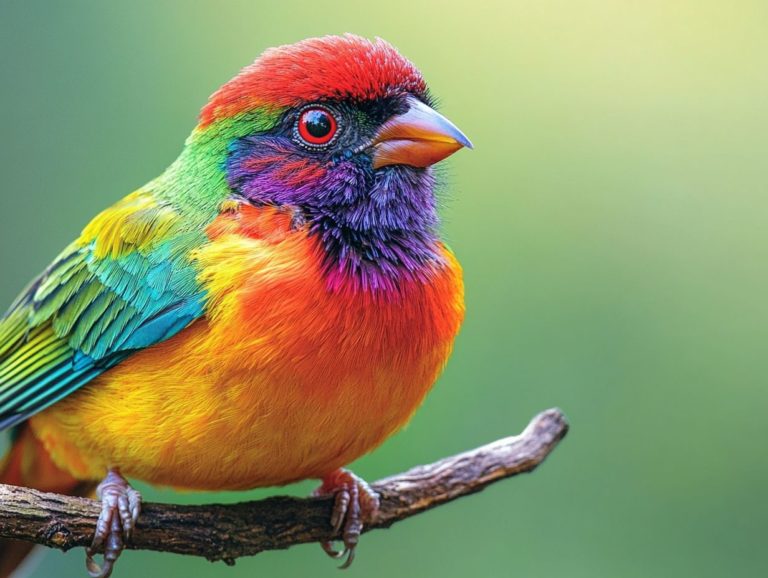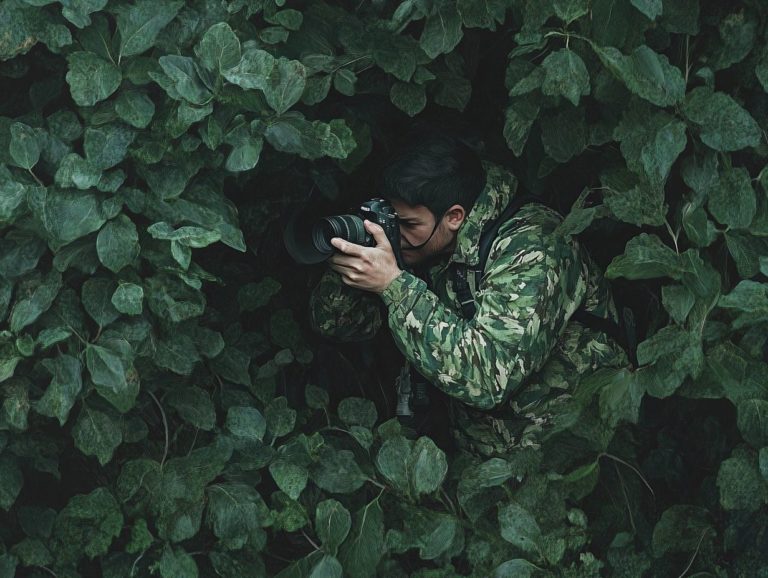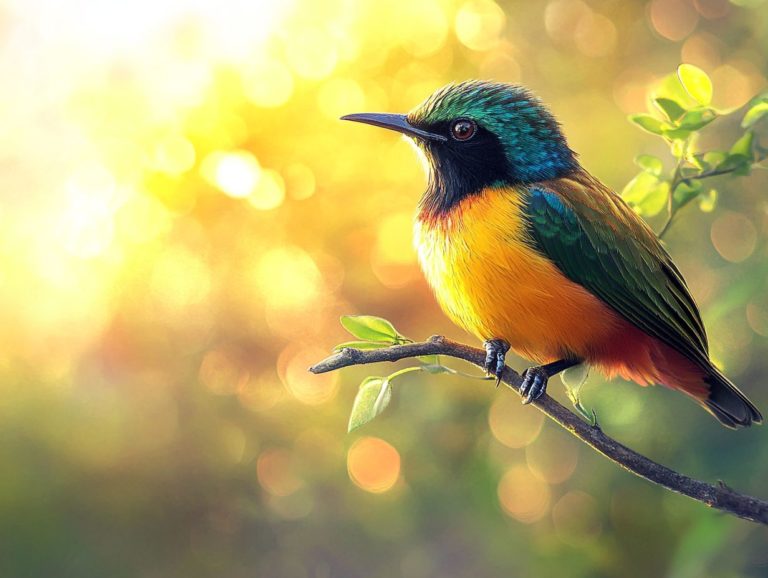Bird Photography: Capturing Unique Perspectives
Bird photography is a captivating fusion of art and science. It invites you to immerse yourself in the beauty and behavior of our avian companions.
This exploration delves into the essential equipment and techniques you need. It guides you from selecting the perfect camera and lens to mastering the nuances of composition and lighting.
Discover the hottest spots to find birds and elevate your photography! Learn unique perspectives that can enhance your shots and get expert tips for creating a bird-friendly environment.
Whether you re just starting out or you re a seasoned photographer, these insights are designed to elevate your bird photography to new heights.
Contents
- Key Takeaways:
- Equipment and Techniques
- Composition and Lighting Tips
- Locations for Bird Photography
- Capturing Unique Perspectives
- Tips for Attracting Birds
- Frequently Asked Questions
- What is bird photography?
- Why is it important to capture unique perspectives in bird photography?
- What are some techniques for capturing unique perspectives in bird photography?
- What equipment is needed for bird photography?
- What are some tips for getting close to birds for unique perspectives?
- How can I improve my bird photography skills?
Key Takeaways:
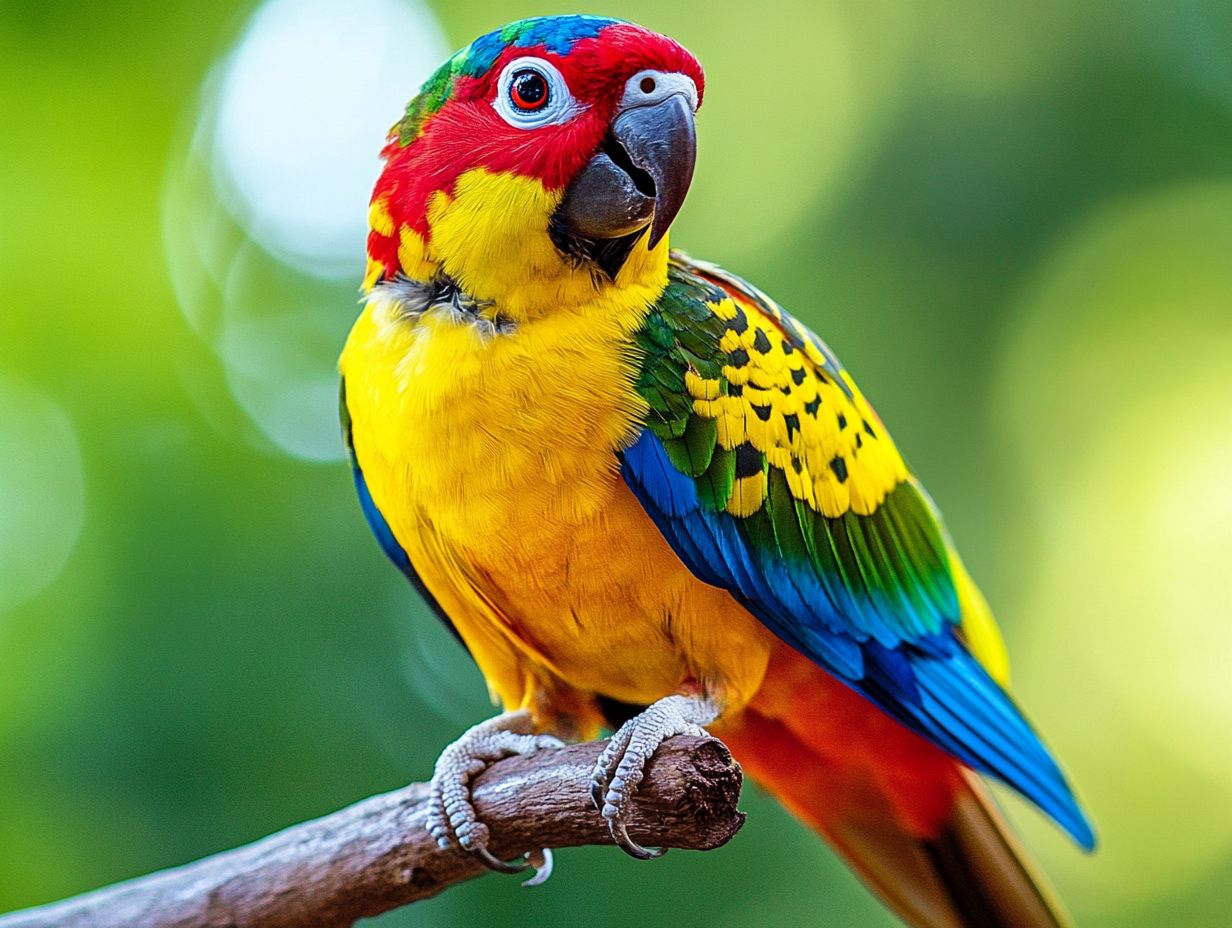
- Bird photography requires good camera and lens selection, as well as composition and lighting techniques.
- Knowing the best locations to find birds is key for capturing unique perspectives in your photos.
- Attracting birds to your environment creates interesting photo opportunities.
What is Bird Photography?
Bird photography is a unique and captivating genre of wildlife photography. It invites you to capture the extraordinary behaviors and interactions of various bird species in their natural habitats. If you’re interested in this art form, check out our guide on how to get started with bird photography.
This artistic endeavor enables you to document how these remarkable creatures engage with their environment. It showcases the intricate details of their gestures and emotional connections.
From the nesting season to the effects of different weather conditions, you ll uncover the beauty of their diverse poses and life stages.
To truly capture the essence of your avian subjects, understanding bird behavior is crucial. Additionally, learning how to use composition to enhance bird photos can significantly improve your results. Master field techniques like silent observation and strategic positioning to enhance your chances of capturing those awe-inspiring moments.
The emotional connection fostered through effective visual storytelling deepens your appreciation for the intricate relationship between birds and their ecosystem. Patience becomes your greatest ally, allowing you to witness natural interactions that often go unnoticed by the casual observer.
In essence, bird photography not only serves as documentation but also highlights the environmental connections that weave through our shared world.
Equipment and Techniques
In the realm of bird photography, choosing the right equipment and mastering various techniques is essential for capturing images that evoke emotion. It also highlights the distinctive character of birds in their natural habitats.
Blend technical skill with an artistic eye to create stunning visuals that resonate with your audience.
Camera and Lens Selection
Choosing the right camera and lens for bird photography is crucial for capturing the intricate details and unique moments that convey the emotions and behaviors of birds in their natural habitats.
To excel in this art form, weigh the benefits of different camera systems. DSLRs are known for their robust performance and extensive lens compatibility. Meanwhile, mirrorless cameras offer lighter bodies and superior autofocus capabilities.
The decision between these types of cameras can significantly influence how easily you can track fast-moving subjects, like birds in flight.
Understanding focal lengths think 300mm or 400mm can dramatically affect your composition. It allows you to frame your shots more closely without disturbing the wildlife.
A wide aperture, such as f/2.8, gives you the power to create stunning bokeh, the blurred background effect that makes your subject stand out.
Popular choices like the Canon EF 100-400mm or the Nikon Z 400mm f/2.8 can truly elevate your visual storytelling. These lenses showcase bird interactions so vividly that your viewers will feel a genuine connection to the wild.
Composition and Lighting Tips
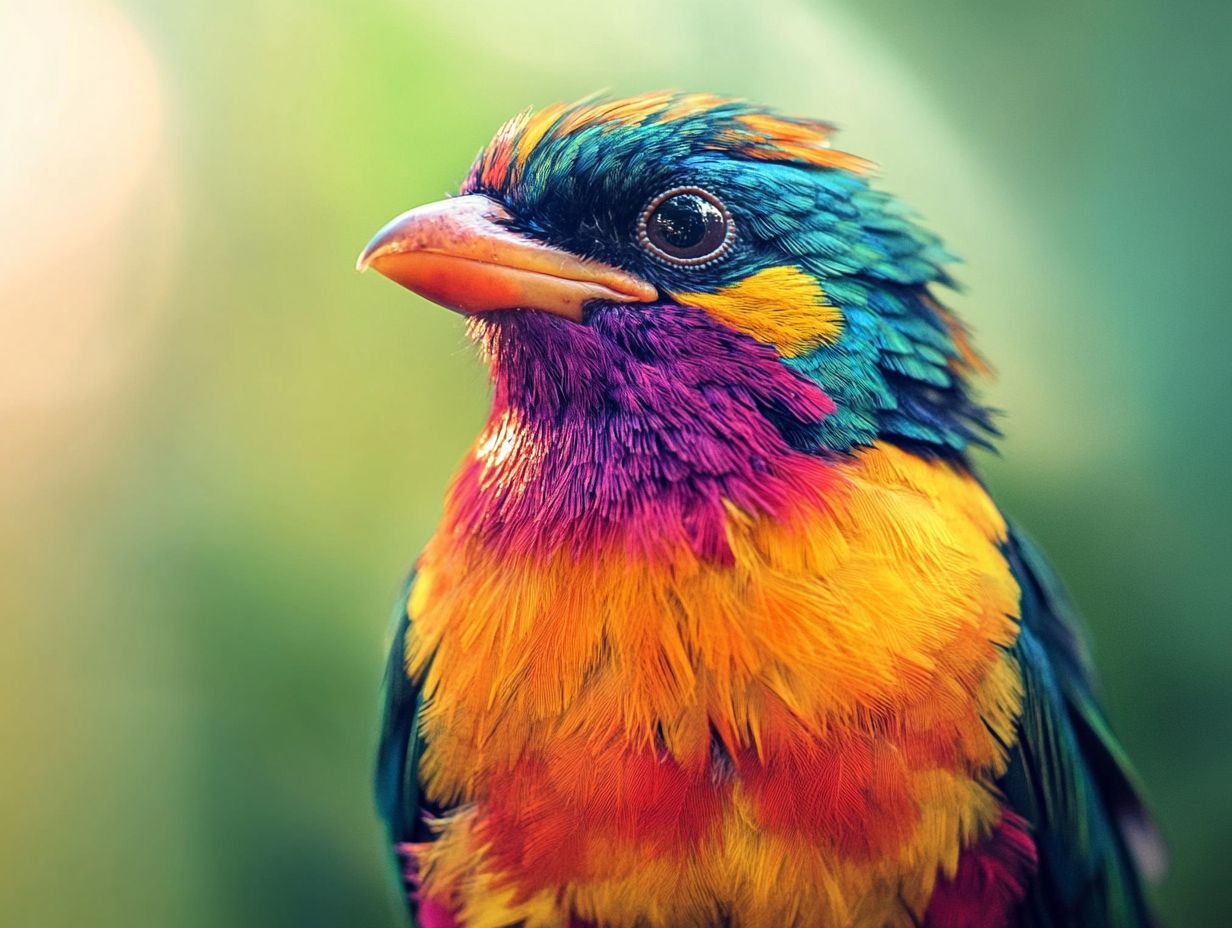
Mastering composition and lighting techniques is essential for bird photographers who aspire to create powerful images that connect with viewers. These images draw viewers into the unique world of wildlife while revealing the character of the birds being photographed.
To achieve this, apply the rule of thirds, a common photography guideline that enhances your visual narrative by positioning the bird off-center. This often results in a more dynamic composition. Thoughtful framing, incorporating natural elements like branches or foliage, guides the viewer’s eye directly to your subject. An intriguing background adds context and depth, enriching the overall story.
Lighting is crucial; the golden hour provides soft, warm light, ideal for capturing delicate feather details. Additionally, backlighting can create an enchanting glow. By mastering these elements, you can elevate your skills and foster a deeper emotional connection between your viewers and your subjects.
Locations for Bird Photography
Identifying optimal locations for bird photography is vital for encountering a diverse array of bird species. This enhances your photographic opportunities to capture the intricate behaviors and interactions of wildlife in their natural habitats, elevating your work.
Best Places to Find Birds
Some of the best places for bird photography include nature reserves, wetlands, and coastal areas. Each location offers unique habitats that attract diverse bird species. Here are a few top spots:
- Everglades in Florida: Home to extraordinary birds like the Roseate Spoonbill and the Great Egret.
- Costa Rica: Capture breathtaking images of the Resplendent Quetzal and a multitude of hummingbird species.
- Madagascar: Discover rare gems like the Madagascar Pygmy Kingfisher on pristine beaches.
However, these beautiful habitats face urgent environmental challenges such as climate change, deforestation, and habitat loss. These threats could diminish bird populations over time. As an enthusiast, it’s vital to raise awareness and advocate for the preservation of these essential ecosystems. Act now to protect these fragile ecosystems!
Capturing Unique Perspectives
Capturing unique perspectives in bird photography, particularly an eye-level viewpoint, is essential for portraying the character and behaviors of these creatures. For more insights on this technique, check out Field Notes: Making the Most of Bird Photography. This approach creates compelling images that engage viewers and tell captivating stories.
Each shot invites viewers to experience the world through the eyes of the birds, enriching the narrative and enhancing the visual impact.
Using Different Angles and Techniques
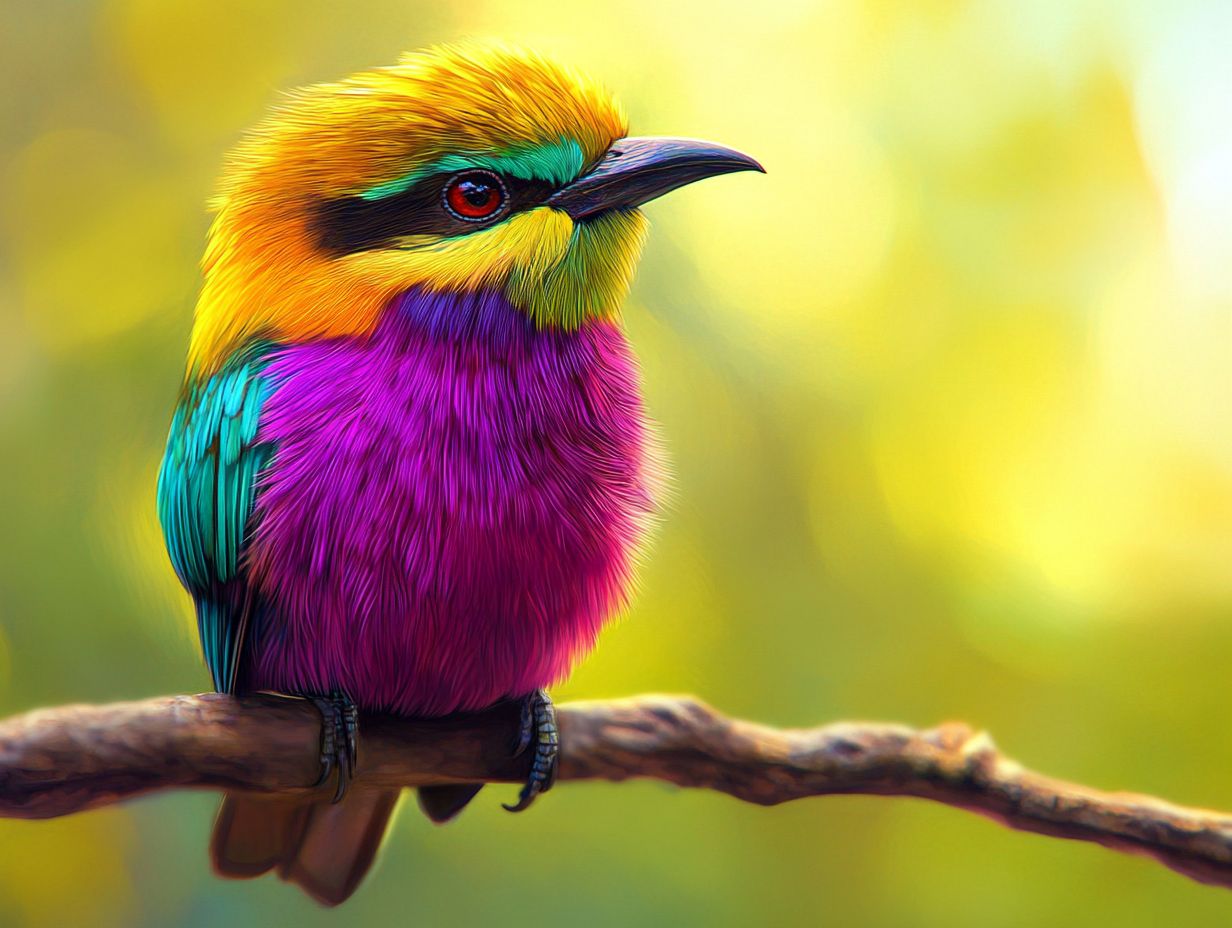
Utilizing different angles and techniques in bird photography significantly elevates the emotional connection and visual intrigue of your images, making it essential for capturing the beauty of birds in their habitat. This allows you to capture the unique gestures and behaviors of your avian subjects.
Using panning techniques creates a thrilling sense of motion, allowing viewers to feel as though they are soaring alongside the bird. Additionally, tilt-shift photography introduces a delightful miniature effect, drawing attention to intricate details of nests or feeding behaviors that might otherwise go unnoticed.
Incorporating reflections from a calm lake can add surprise and symmetry, enriching your overall composition. Capturing birds at various life stages such as a fledgling taking its first flight or a parent nurturing its young adds layers to your narrative. This invites viewers to appreciate the lifecycle and the intricate dynamics of nature.
These methods not only showcase the beauty of avian life but also enhance storytelling through vivid imagery, allowing you to connect with your audience on a deeper level.
Tips for Attracting Birds
Creating a bird-friendly environment is one of the most effective strategies for attracting birds to your photography sessions. By fostering a welcome habitat, you encourage these avian visitors to engage and thrive, granting you countless opportunities to observe their behaviors and capture stunning images.
Creating a Bird-Friendly Environment
To attract birds, create a bird-friendly environment. This means incorporating features that encourage their natural behaviors.
Plant native species like sunflowers and milkweed. These plants offer food and shelter, increasing your chances of spotting various birds.
Set up feeding stations with high-quality seeds to attract a variety of birds. Providing clean water with bird baths will keep them coming back.
Capture extraordinary moments like courtship displays and playful feeding habits! These simple changes will make your space a vibrant canvas for stunning wildlife photography.
Frequently Asked Questions
What is bird photography?
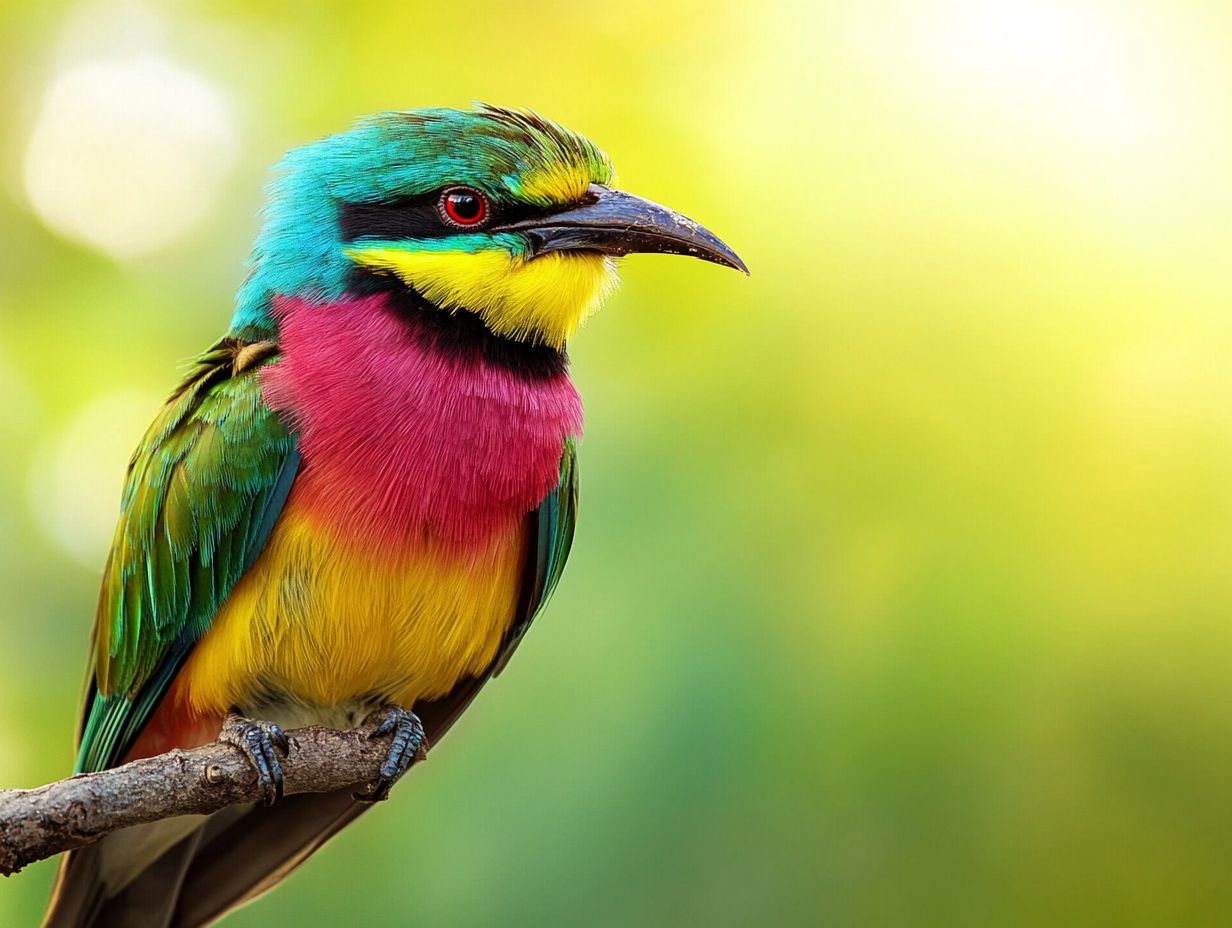
Bird photography is the art of capturing images of birds in their natural habitat. It involves understanding bird behavior, using specialized equipment, and having patience and skill to capture unique perspectives.
Why is it important to capture unique perspectives in bird photography?
Unique perspectives make the photographs more visually interesting and can help tell a story about the bird’s behavior or environment. To enhance your skills, consider exploring how to create stunning bird portraits, which sets your photos apart from others and showcases your creativity as a photographer.
What are some techniques for capturing unique perspectives in bird photography?
One technique is to get down to the bird’s eye level, which can offer a more intimate and unique view of the bird. Use different angles and compositions, such as shooting from below or above the bird. To enhance your shots further, consider these tips for photographing rare bird species. Incorporating the bird’s environment into your photos adds scale and context to your images.
What equipment is needed for bird photography?
A good camera and a zoom lens are essential for bird photography. A zoom lens lets you take close-up shots of birds from a distance. It is also helpful to have a tripod or monopod to stabilize the camera and a lens hood to reduce glare. Other useful equipment includes a remote shutter release, a teleconverter for increased zoom, and a bird hide or camouflage gear.
What are some tips for getting close to birds for unique perspectives?
Patience and stealth are key when trying to get close to birds. Avoid sudden movements and loud noises that may startle them. It’s also helpful to blend in with your surroundings and use natural objects, like bushes or trees, as cover. Familiarize yourself with the bird’s behavior and habits to anticipate their movements and get closer shots.
How can I improve my bird photography skills?
Practice, practice, practice! The more you photograph birds, the better you will become at capturing unique perspectives. It’s also helpful to study the work of other bird photographers and attend workshops or classes to learn new techniques, such as understanding depth of field. Lastly, don’t be afraid to experiment and try different angles and compositions to find your own unique style.

